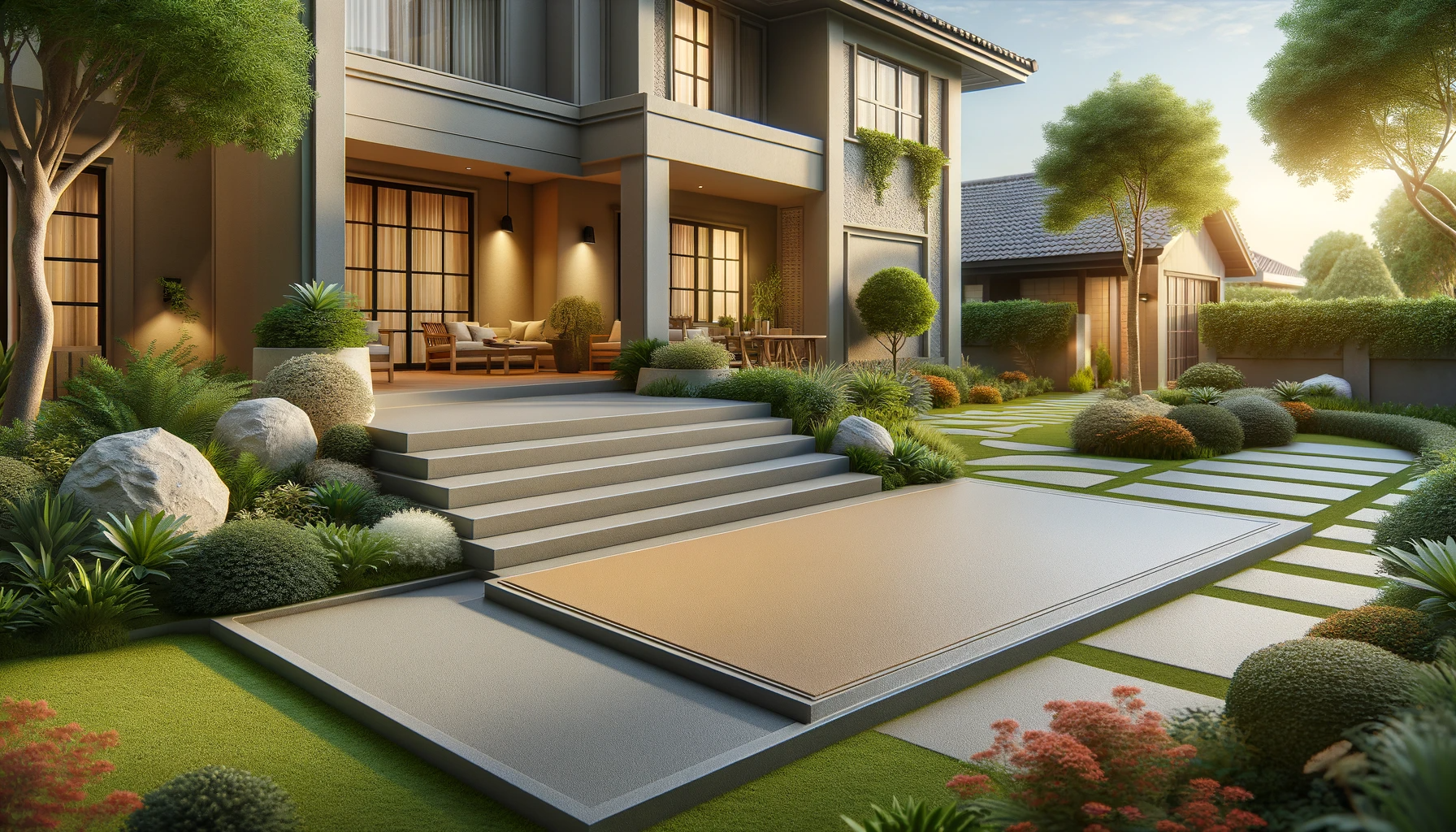As the world moves towards a more sustainable future, so too does the way we design our landscapes. As homeowners, we often think of traditional methods like concrete and asphalt when considering how to design our outdoor spaces. However, you can consider more sustainable alternatives. In this blog, we will explore some of the most popular landscape design alternatives to coloring concrete and how they can contribute to a greener future.
Design Alternatives to Coloring Concrete
1. Pavers: Pavers are a great alternative to coloring concrete. They come in a variety of shapes, sizes, and colors, allowing you to create interesting patterns and designs. Pavers also present a more sustainable option than concrete, as they have the potential to be recycled or repurposed in future projects.
2. Gravel: Gravel is another great sustainable option for creating a unique look in your landscape. It’s simple to install, requires minimal upkeep, and comes in various colors and sizes. Additionally, it effectively controls erosion.
3. Permeable Paving: Permeable paving is a type of paving material that allows water to flow through it. This helps reduce runoff and prevents soil erosion. It also helps to reduce the amount of pollutants that reach our water sources.
4. Plantings: Plantings are a great way to add color and texture to your landscape without the need for concrete or asphalt. You can select from a variety of native plants that suit your climate and soil type effectively. Plantings are also great for providing wildlife habitat and reducing runoff.
5. Compost: You can utilize compost to craft a distinctive and appealing appearance in your landscape while also reducing water runoff and enhancing soil quality.
Conclusion:
Coloring concrete remains a popular choice for many homeowners, yet it’s important to explore other sustainable options. From pavers and gravel to permeable paving, plantings, and compost, a variety of alternatives exist to fashion beautiful and sustainable landscapes. With a little creativity, you can find a unique and sustainable solution for your landscape design needs.

